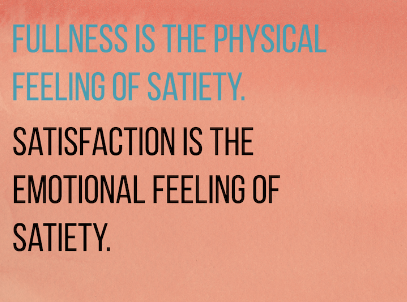Satiety vs. Satisfaction - The GLP-1 Effect

Hey Peptide Enthusiasts,
Welcome back to another edition of The Peptide Insider! Today, we're diving into an intriguing topic that’s been creating quite a buzz in the peptide world: the difference between satiety and satisfaction, especially in the context of GLP-1 agonists.
Satiety vs. Satisfaction: What's the Deal?
So, you’re on a GLP-1 agonist like retatrutide, and suddenly, your life feels... different. You’re not craving donuts, McDonald's doesn’t tempt you, and you’re not obsessively refreshing social media for those sweet, sweet likes. What’s going on here?
Satiety: This is the classic "I’m full" signal. It’s your body’s way of saying, "We’ve had enough food, thanks." It’s a physical sensation that stops you from overeating.
Satisfaction: Now, this is where things get interesting. Satisfaction is broader and more psychological. It’s the feeling of not needing anything else. You’re not just done with food; you’re content with life.
GLP-1 Agonists: The Satisfaction Kings
GLP-1 agonists don’t just curb your appetite; they mess with your brain in the best way possible. They reduce cravings and the constant drive for external rewards. Here’s the kicker: they make you feel satisfied. Not just with food, but with life in general.
Imagine this: You walk into a store, and there’s no internal debate about buying that chocolate bar. Your stomach feels empty, but you don’t crave the food. It’s not about feeling full; it’s about not needing anything else.
The Satiety Confusion
Many people throw around the term "satiety" when talking about GLP-1s, but that’s a bit misleading. Satiety is about being full, which is a rewarding, almost hedonistic feeling. Satisfaction, on the other hand, is about not needing to seek that reward in the first place.
The Boring Side of Satisfaction
Here’s where it gets funny (or not so funny, depending on how you look at it). When you’re satisfied, life can feel a bit boring. You’re not driven by highs and lows anymore. Some folks might even mistake this even-keeled state for mild depression.
Think about it: No more late-night snack runs, no more scrolling endlessly for likes, no more chasing after every fleeting pleasure. You’re just... content. And sometimes, that’s so different from the constant chase that it feels like something’s missing.
The Science Behind It
Studies show that GLP-1 agonists reduce activation in brain regions involved in reward processing . This means less impulsive eating and fewer behaviors driven by the need for rewards. They also help stabilize mood, reducing anxiety and improving overall emotional balance .
But here’s the real kicker: This shift from a reward-driven mindset to one of contentment can feel like a void if you’re used to constant stimulation. It’s a psychological adjustment, and understanding this can help you embrace the new normal as a healthier balance.
The Takeaway
GLP-1 agonists are more than just appetite suppressants. They’re life-changers, helping you find satisfaction in ways you never thought possible. Sure, life might feel a bit more boring without the constant highs and lows, but that’s a small price to pay for a stable, content, and healthier you.
So next time someone tells you they’re feeling a bit off on their GLP-1 journey, remind them: It’s not about being full; it’s about being satisfied. And sometimes, that can be the best feeling in the world.
Stay peptide-powered and satisfied, folks!
Sean Davis
The Peptide Insider